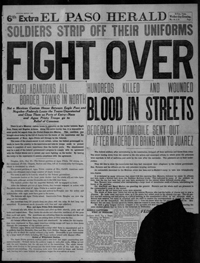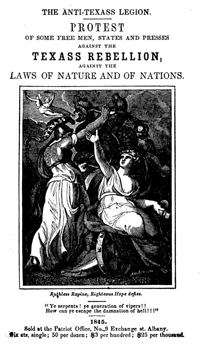 |
T A B L E O F C O N T E N T S
N O V E M B E R / D E C E M B E R 2 0 1 3
Volume 19, Number 11/12
doi:10.1045/november2013-contents
ISSN: 1082-9873
E D I T O R I A L
A Full Fall Issue
by Laurence Lannom, Corporation for National Research Initiatives
A R T I C L E S
Growing Institutional Support for Data Citation: Results of a Partnership Between Griffith University and the Australian National Data Service
Article by Natasha Simons, Griffith University, Brisbane, Karen Visser, Australian National Data Service and Sam Searle, Griffith University, Brisbane
Abstract: Data is increasingly recognised as a valuable product of research and a number of international initiatives are underway to ensure it is better managed, connected, published, discovered, cited and reused. Within this context, data citation is an emergent practice rather than a norm of scholarly attribution. In 2012, a data citation project at Griffith University funded by the Australian National Data Service (ANDS) commenced that aimed to: enhance existing infrastructure for data citation at the University; test methodologies for tracking impact; and provide targeted outreach to researchers about the benefits of data citation. The project extended previous collaboration between Griffith and ANDS that built infrastructure at the University to assign DOI names (Digital Object Identifiers) to research data produced by Griffith's researchers. This article reports on the findings of the project and provides a case study of what can be achieved at the institutional level to support data citation.
A Method for Identifying Personalized Representations in the Archives
Article by Mat Kelly, Justin F. Brunelle, Michele C. Weigle, and Michael L. Nelson, Old Dominion University
Abstract: Web resources are becoming increasingly personalized — two different users clicking on the same link at the same time can see content customized for each individual user. These changes result in multiple representations of a resource that cannot be canonicalized in Web archives. We identify characteristics of this problem by presenting a potential solution to generalize personalized representations in archives. We also present our proof-of-concept prototype that analyzes WARC (Web ARChive) format files, inserts metadata establishing relationships, and provides archive users the ability to navigate on the additional dimension of environment variables in a modified Wayback Machine.
Descriptive Metadata for Field Books: Methods and Practices of the Field Book Project
Article by Sonoe Nakasone, District of Columbia Public Library System and Carolyn Sheffield, Smithsonian Institution
Abstract: Field books are primary source materials documenting the events leading up to, and including, the collection of specimens or observation of species for the purposes of natural history research. The mission of the Field Book Project (FBP) is to create one online location for field book content. The FBP uses the collection and item level descriptive standards Natural Collections Description (NCD) and Metadata Object Description Schema (MODS), respectively. Additionally, field book creators are described using Encoded Archival Context (EAC). In this paper we explain the descriptive metadata used by FBP for field books, which share characteristics of museum, archives, and library objects, and explain why these schemas were chosen, how they are used, and the challenges and future goals of FBP.
Providing Access to Electronic Theses and Dissertations: A Case Study from Togo
Article by Joachim Schöpfel, Charles de Gaulle University Lille 3 and Maebena Soukouya, University Library of Kara, Togo
Abstract: Open access has become a significant part of scientific communication. With regards to dissemination of scientific production, the green road, i.e. self-archiving of scientific work in an open access repository, is often considered as the choice for developing countries because of lower investment and operational costs. This paper will provide a review of relevant literature on the topic, followed by a short overview of open repositories in sub-Saharan African countries, a region facing serious political, economic and social challenges. The main section will present a project for the digitizing of PhD theses of two universities in Togo, and we will then discuss questions and problems related to the specific conditions of the project, in order to contribute to the understanding of the dynamics and rich diversity of the open access movement. Is there an option for sustainable development of open access in these countries? The future will show whether open access contributes to reducing the digital divide between sub-Saharan Africa and other countries or whether it will instead consolidate this divide.
Schema for the Integration of Web Applications
Article by Theo van Veen, Koninklijke Bibliotheek, The Netherlands
Abstract: Web search results form the basis for a variety of further actions by users, including requesting related information in Wikipedia, language translation, transforming an abstract into a word cloud, etc., actions which the provider of the original data is typically unaware of. SIWA (Schema for the Integration of Web Applications) was developed to describe how a user wants data fields from a web application to be used as input for other web applications. We propose a mechanism to add the appropriate links to presented data. The intent is to develop a standard for these service integration descriptions that can be shared by users and content providers. Originally developed as part of the EuropeanaConnect project but not highly publicized, SIWA has been simplified and improved in an effort to lower the implementation barrier. This article discusses the recent changes in approach with respect to SIWA, and current trends in the use of the Internet, that should increase the chance of a broad adoption of this concept of service integration, and hopefully trigger new initiatives supporting user defined service integration by means of SIWA.
2012 Census of Open Access Repositories in Germany: Turning Perceived Knowledge Into Sound Understanding
Article by Paul Vierkant, Humboldt-Universität zu Berlin
Abstract: Germany's open access repository landscape is one of the largest in the world. It is shaped by institutional, subject and cross-institutional repositories serving different needs which range, for example, from a mere theses server to a repository integrated into an institutional information infrastructure. To date this landscape has never been fully surveyed. This article presents and interprets the results of a 2012 Census of Open Access Repositories in Germany. This Census covered crucial issues ranging from repository size and software, various value-added services, to general aspects of open access. The key findings of this survey shall help stakeholders in their decision making by identifying trends in the development of open access repositories in Germany.
C O N F E R E N C E R E P O R T S
Building Global Partnerships — Second Plenary Meeting of the Research Data Alliance
Conference Report by Mark A. Parsons, Rensselaer Polytechnic Institute
Abstract: The Research Data Alliance held its second biannual Plenary at the National Academy of Sciences in Washington, DC, 16-18 September 2013. It was an exciting meeting with enthusiastic attendees focused on getting things done. Participants came from many sectors and nations but primarily the US and Europe. US, European, and Australian governments continue to show strong commitment to RDA, and individual and organizational membership continues to grow. Most of the work of RDA occurs in Working and Interest Groups and much of the meeting was devoted to breakout sessions. Coordinating the growing number of groups and Plenary breakout sessions will be an ongoing challenge, but is a good challenge heartily embraced in planning for the next Plenary in Dublin, Ireland in March 2014.
An Overview of the 17th International Conference on Theory and Practice of Digital Libraries (TPDL 2013)
Conference Report by Vittore Casarosa, Institute for Information Science and Technologies (ISTI), Italian National Research Council (CNR), Pisa, Italy and Ana Pervan, Intern at the European Organization for Nuclear Research (CERN), Meyrin, Switzerland
Abstract: The 17th International Conference on Theory and Practice of Digital Libraries (TPDL) took place in Valletta, Malta, during September 22-26, 2013. A diverse community of participants and their different research approaches gave an international and interdisciplinary feel to this year's conference. The general conference theme was "Sharing meaningful information". Approximately 300 delegates from more than 40 countries presented and discussed challenges and opportunities of digital library architecture, interoperability and information integration, digital library interfaces, user behavior, data re-use and Open Access, linked data, data visualization, long-term preservation, Semantic Web in digital libraries and digital curation.
N E W S & E V E N T S
In Brief: Short Items of Current Awareness
In the News: Recent Press Releases and Announcements
Clips & Pointers: Documents, Deadlines, Calls for Participation
Meetings, Conferences, Workshops: Calendar of Activities Associated with Digital Libraries Research and Technologies
|
 |
F E A T U R E D D I G I T A L
C O L L E C T I O N


El Paso Herald, Wednesday, May 10, 1911, with the leading article, "Soldiers Strip off their Uniforms: FIGHT OVER."
[Courtesy of UNT Special Collections. Used with permission.]

Big Bend of Texas, published by the Albertype Co., 1920.
[Courtesy of UNT Special Collections. Used with permission.]

Anti-Texass Legion: Protest of some free men, states and presses against the Texass rebellion, against the laws of nature and of nations.
[Courtesy of UNT Special Collections. Used with permission.]
Created in 2002, The Portal to Texas History provides online access to a rich collection of books, photographs, artifacts, posters, artwork, maps, newspapers, letters, manuscripts and other historic materials from more than 250 collaborative partners. Because of partner contributions, the Portal has over 300,000 unique items, comprising 3.6 million digital files.
Materials include a fascinating array of rare and invaluable items that document Texas's history, such as handwritten correspondence between Santa Anna and Lorenzo de Zavala from the early 19th century and photograph collections covering seminal events, including the Dallas Police Department's investigation of the 1963 John F. Kennedy assassination and the Texas City Disaster of 1947. Historic newspapers represent a large segment of the materials, with over a million searchable pages dating from 1829 to the present.
The Portal has also had a tremendous impact on Texas students and educators. Having direct access to primary source materials brings history alive in a way that a textbook never could. The Portal's Resource for Educators offers over seventy six comprehensive lesson plans that are tied directly to standards for teaching history. Every year the Portal staff reaches out in person to thousands of teachers at professional conferences and presentations.
The Portal to Texas History is created and maintained by the University of North Texas Libraries' Digital Projects Unit. The Digital Projects Unit supports the Libraries with guidance and digital services including imaging, archival storage of electronic files, digital preservation, and metadata development. Through collaborative efforts such as The Portal to Texas History, the UNT Digital Library, and the Gateway to Oklahoma History, we provide digital content to a worldwide audience.
D - L I B E D I T O R I A L S T A F F
Laurence Lannom, Editor-in-Chief
Allison Powell, Associate Editor
Catherine Rey, Managing Editor
Bonita Wilson, Contributing Editor
|